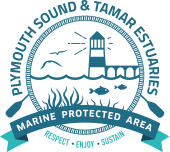These types of development include waterfront, coastal defence schemes and other schemes which involve construction of structures adjacent to the shoreline or below mean high water springs. Also included are slipways and boathouses.
If construction is done badly, waterfront development and coastal defence schemes have the potential to impact on the ecology of the estuary through poor working practices during construction phase (noise and pollution), through loss of habitat or by indirectly causing changes to the way in which the estuary functions.
In order to avoid these impacts, waterfront development should comply with the following measures to reduce the associated impacts.
